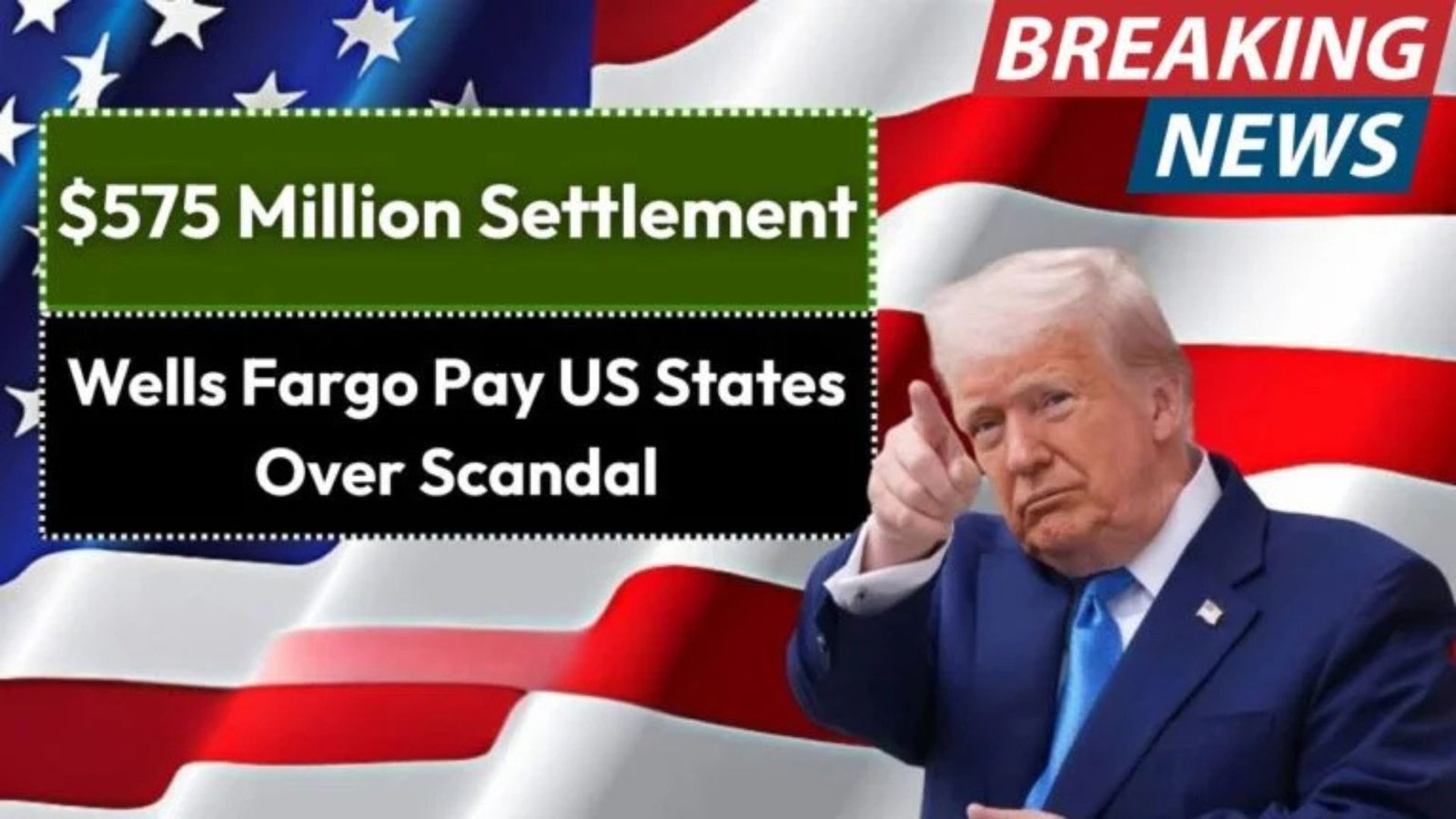In 2016, Wells Fargo, one of America’s biggest banks, was caught in a massive scandal involving fake accounts. The bank’s employees opened millions of unauthorized accounts for customers, all to meet aggressive sales targets. This led to a $575 million settlement with all 50 states and the District of Columbia in December 2018. This article dives into what happened, why it matters, and how Wells Fargo is trying to fix things. Written in simple language, this guide breaks down the scandal, its consequences, and what it means for customers and the banking industry.
What Was the Wells Fargo Fake Accounts Scandal?
How the Scandal Started
Wells Fargo employees created millions of fake savings and checking accounts, credit cards, and other products without customers’ permission. This began as early as 2002 and continued until 2016. The goal was to meet tough sales goals set by the bank’s management. Employees felt pressured to “cross-sell,” which means selling multiple products, like credit cards or mortgages, to existing customers.
Why Did Employees Create Fake Accounts?
The bank’s culture pushed employees to hit unrealistic sales targets. To avoid getting fired or missing bonuses, some workers opened accounts using customers’ personal information without their knowledge. They even forged signatures, created fake PINs, and moved money from real accounts to fake ones. This led to customers being charged unexpected fees and, in some cases, damage to their credit scores.
How Was the Scandal Uncovered?
The scandal came to light in 2016 after customers started noticing strange fees and accounts they didn’t open. A 2013 investigation by the Los Angeles Times sparked further scrutiny, leading to a lawsuit by the Los Angeles City Attorney in 2015. By September 2016, the Consumer Financial Protection Bureau (CFPB) and other regulators fined Wells Fargo $185 million for these illegal practices.
The $575 Million Settlement Explained
What Was the Settlement About?
In December 2018, Wells Fargo agreed to pay $575 million to settle claims with attorneys general from all 50 states and the District of Columbia. This settlement addressed not only fake accounts but also issues like charging customers for unneeded auto insurance and mortgage fees. It was part of a broader effort to resolve the bank’s wrongdoings, which had already cost Wells Fargo nearly $3 billion in fines and settlements by 2018.
Other Major Settlements
The $575 million deal wasn’t the only penalty. Here’s a quick look at other key settlements:
- 2016: $185 million fine from the CFPB and other regulators for fake accounts.
- 2017: $142 million settlement with customers who had unauthorized accounts opened.
- 2018: $1 billion settlement with the CFPB and Office of the Comptroller of the Currency (OCC) for auto and mortgage lending violations.
- 2020: $3 billion settlement with the Department of Justice (DOJ) and Securities and Exchange Commission (SEC) for criminal and civil violations.
Major Wells Fargo Settlements (2016–2020)
| Year | Amount | Reason | Regulatory Body |
|---|---|---|---|
| 2016 | $185M | Fake accounts | CFPB, OCC, LA City Attorney |
| 2017 | $142M | Unauthorized accounts | Consumer settlement |
| 2018 | $1B | Auto and mortgage violations | CFPB, OCC |
| 2018 | $575M | Fake accounts, auto, and mortgage issues | 50 States & DC |
| 2020 | $3B | Criminal and civil violations | DOJ, SEC |
Consequences of the Scandal
Financial Impact
The fake accounts scandal cost Wells Fargo billions in fines, legal fees, and settlements. By 2020, the bank had paid over $4 billion in penalties. These costs hurt the bank’s profits and led to a drop in its stock price, which fell 5% since 2016, while competitors like JPMorgan Chase and Bank of America doubled in value.
Damage to Reputation
Before the scandal, Wells Fargo was seen as a stable and trustworthy bank. The fake accounts scandal shattered that image. Customers lost trust, and many, like Maryland retiree Brian Kennedy, closed their accounts after discovering unauthorized ones in their names. The bank’s reputation took a hit, making it harder to attract new customers and investors.
Leadership Changes
The scandal led to major shake-ups in leadership:
- John Stumpf, the CEO during the scandal, resigned in October 2016 after pressure from regulators and the public. He also forfeited $41 million in stock options and was later fined $17.5 million by the OCC.
- Carrie Tolstedt, head of the community banking division, faced civil charges for her role in the scandal.
- Timothy Sloan, Stumpf’s replacement, apologized in 2017 but faced ongoing pressure and left in 2019.
- Charles Scharf, the current CEO, has promised to reform the bank’s culture and prevent future issues.
How Wells Fargo Responded
Reforms and Changes
To rebuild trust, Wells Fargo made several changes:
- Improved Oversight: The bank centralized its control functions and strengthened compliance programs to catch issues early.
- Customer Support: Wells Fargo set up teams to review customer complaints and created a mediation system for those affected, especially in California.
- Sales Practice Changes: The bank ended aggressive sales goals and stopped rewarding employees based on cross-selling metrics.
- Transparency: Wells Fargo now provides regular audit reports to regulators to ensure compliance with settlement terms.
Efforts to Compensate Customers
Wells Fargo has worked to make things right for affected customers. By 2018, about 85,000 accounts that incurred fees (totaling $2 million) were identified, and the bank began refunding customers. The $3 billion settlement in 2020 included $500 million to compensate investors, though individual customers were compensated separately. However, some customers still reported issues, like damaged credit scores or accounts sent to debt collectors.
Broader Impact on the Banking Industry
Lessons Learned
The Wells Fargo scandal highlighted the dangers of prioritizing profits over ethics. It showed how aggressive sales targets can lead to unethical behavior, harming customers and the bank’s reputation. The scandal prompted other banks to review their sales practices to avoid similar issues.
Regulatory Changes
The scandal led to stronger regulations in the banking industry. The CFPB and OCC increased scrutiny of sales practices, and the DOJ emphasized accountability for banks and their executives. The case also pushed for more transparency and better protections for customers.
What It Means for Customers Today
Checking Your Accounts
If you’re a Wells Fargo customer, it’s a good idea to review your accounts for anything unusual. The bank has set up ways for customers to close unwanted accounts or resolve issues by visiting a branch or calling customer service. California customers, in particular, were encouraged to check their accounts as part of the 2018 settlement.
Rebuilding Trust
While Wells Fargo has made changes, some customers remain skeptical. The bank’s efforts to improve transparency and customer service are ongoing, but rebuilding trust will take time. If you’re unsure about staying with Wells Fargo, consider researching other banks with strong reputations for customer care.
Conclusion
The Wells Fargo fake accounts scandal was a wake-up call for the banking industry. The $575 million settlement in 2018, along with billions in other fines, showed the serious consequences of unethical practices. While Wells Fargo has taken steps to fix its mistakes, the scandal left a lasting mark on its reputation and customers’ trust. By learning from this, banks and regulators are working to ensure customers are better protected in the future. For now, staying informed and checking your accounts regularly is the best way to safeguard your finances.
FAQ: Wells Fargo Fake Accounts Scandal
What was the Wells Fargo fake accounts scandal?
The scandal involved Wells Fargo employees opening millions of unauthorized accounts, like checking, savings, and credit card accounts, without customers’ consent to meet sales goals. It started in 2002 and was exposed in 2016.
How much did Wells Fargo pay in settlements?
Wells Fargo paid $575 million in 2018 to settle with all 50 states and the District of Columbia. Overall, the bank paid over $4 billion in fines and settlements related to the scandal by 2020.
Who was affected by the scandal?
Customers who had unauthorized accounts opened in their names were affected. About 85,000 accounts incurred $2 million in fees, and some customers’ credit scores were harmed.
What happened to the bank’s leadership?
CEO John Stumpf resigned in 2016 and was fined $17.5 million. Carrie Tolstedt, head of community banking, faced civil charges. New CEO Charles Scharf has focused on reforms.
How can customers protect themselves?
Check your bank statements for unfamiliar accounts or fees. Contact Wells Fargo to close unwanted accounts or resolve issues. Consider switching banks if you’re concerned about trust.
Is Wells Fargo still safe to bank with?
Wells Fargo has made changes to improve oversight and customer service, but some customers remain cautious. Research the bank’s current practices and compare them with other banks before deciding.




